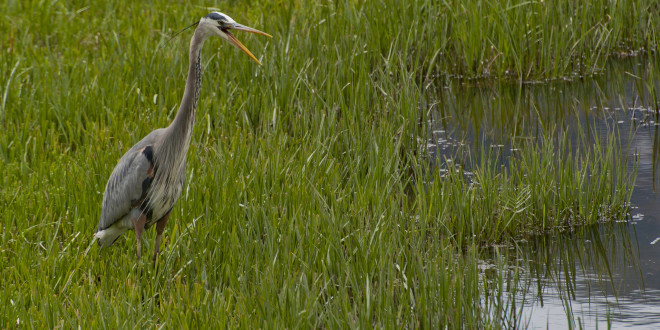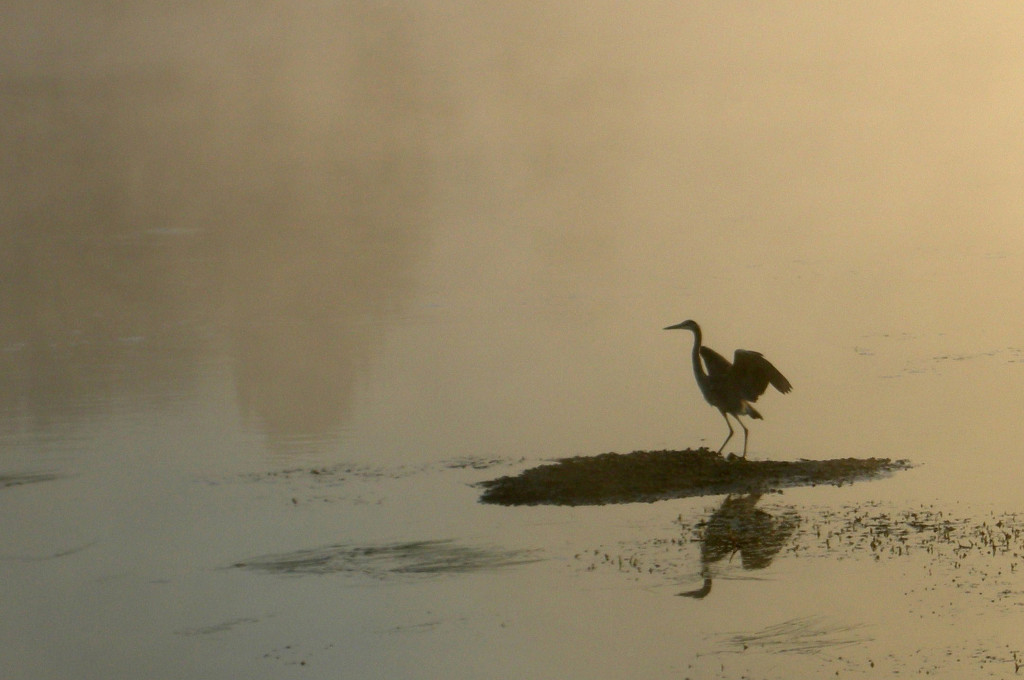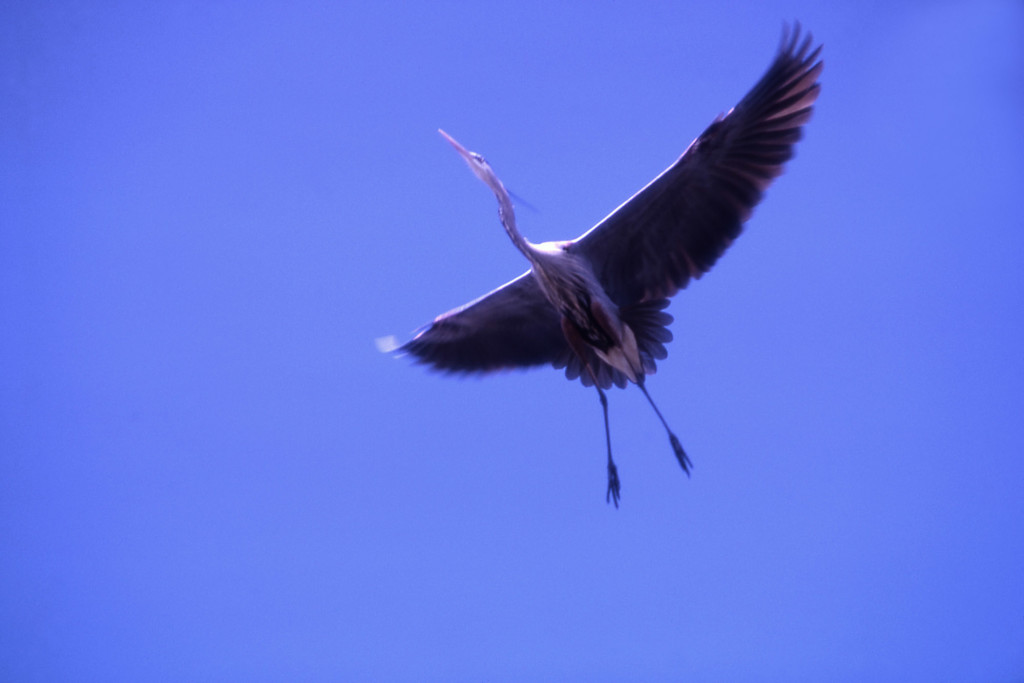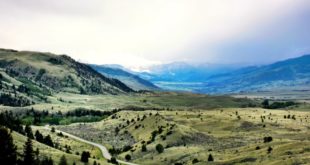It’s a special treat in Yellowstone National Park to see Great Blue Herons wading in one of the Park’s many waterways.
Described as statue-like in poise and composure, a Great Blue Heron will walk the waters, neck curved to a strikingly sinuous S, until—whap!—it’s got a trout or a frog. And with a gulp the fish is gone; the heron moves on, a living artwork in the scenery.
It’s equally impressive seeing these large birds soar or, even better, alight on a waterway.
Although Great Blue Herons are by no mean unique to Yellowstone, they’re still a marvelous surprise to see in places like the Hayden Valley or along the Madison River.
Basic Facts
- Scientific name: Ardea herodias.
- Most common and largest heron in North America.
- Distinguished by their long bills and blue cap and wing feathers.
- Body is slate-gray and white.
- Both male and female Great Blue Herons measure 38-54 inches long.
- Wingspan: 65.7-79 inches.
- Weigh 74 to 88 ounces.
- Great Blue Heron necks can bend to a sinuous S shape, making them more aerodynamic and better at striking at prey.
Habitat
- Live in both freshwater and saltwater habitats.
- Great Blue Herons will also forage in grasslands and farm fields.
- Often forage alone.
- Live in breeding colonies, often found two to four miles from favorite feeding areas.
- Colonies often found in isolated swamps or islands, near forest-bound lakes and ponds.
- Great Blue Herons will defend their territories with a specialized stance—head thrown back, beak skyward, wings outstretched.
Diet
- Strike at a variety of prey.
- Fish is a staple of diet.
- Other prey includes amphibians, reptiles, insects—even small mammals and other birds.
Hunting
- Great Blue Herons have two assets when it comes to hunting: strong mandibles and dagger-like bills.
- These come in handy with larger fish, who often get shook around with spine-breaking force before a heron feeds.
- Great Blue Herons have another advantageous adaptation: specialized chest feathers that can be used to wash fish slime and oils from their feathers.
- Finally, heron eyes contain a large percentage of rod-type photoreceptors, enabling them to hunt day and night.
Range/Migration
- Great Blue Herons will build nests from available materials, sometimes using unguarded or abandoned nests.
- Males will present their nest to a female, who can decide whether to build her portion.
- Females will weave a platform and nest cup, lining it with pine needles, dry grass, mangrove leaves, moss, and other materials.
- Nest building can take anywhere from three days to two weeks.
- A finished nest measures an average of 20 inches across.
- Some nests used year after year will become more elaborate over time, widening and deepening.
- A mature Great Blue Heron nest can measure upwards of four feet across and three-and-a-half feet deep.
Courtship
- Courtship is elaborate, taking place in a colony of nesting pairs.
- Number upwards in the hundreds and even thousands.
- Displays include ritualized greetings, stick transfers and nest relief ceremony.
- Great Blue Herons will erect plumes and “clapper” bill tips to attract females.
- Herons are seasonally monogamous but choose different mates through their lives.
Reproduction
- Great Blue Herons lay two to six eggs.
- One to two broods per year.
- Eggs measure two-and-a-half to three inches long and two inches wide.
- Coloring: pale blue.
- Incubate for 27-29 days.
- Great Blue Herons will nest for 49-81 days.
Blue and White
- A variety of Great Blue Heron, called the “great white heron” is found exclusively in southern Florida, the Yucatan Peninsula, and the Caribbean.
- Known to overlap—blue and white great heron hybrids are called “Wurdemann’s herons.”
- Wurdemann’s herons have the body of a Great Blue Heron with a white heron’s head and neck coloring.
 Yellowstone Insider Your Complete Guide to America's First National Park
Yellowstone Insider Your Complete Guide to America's First National Park








You must be logged in to post a comment.